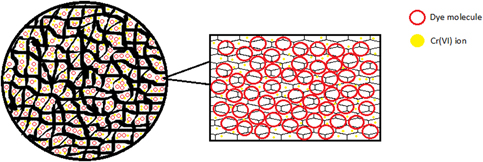Article contents
Effect of acid and hydrothermal treatments on the multilayer adsorption of Cr(VI) and dyes on biomass-derived nano/mesoporous carbon
Published online by Cambridge University Press: 21 May 2019
Abstract

Nano/mesoporous carbon was prepared from pine wood sawdust via the pretreatment of acid and hydrothermal process, followed by potassium hydroxide (KOH) activation. This study proposed the enhancement of activated carbon (AC) adsorption capacity by utilizing the vacant sites and phenomena of opposite charge attraction via multilayer adsorption of Cr(VI) ions and dyes with positive and negative charges. On the first layer, the maximum adsorption capacities for Cr(VI) ions, methylene blue (MB) molecules, and acid red 18 (AR18) molecules onto AC were found to be 7.91 mg/g, 476.19 mg/g, and 434.78 mg/g, respectively. For multiple adsorption, after Cr(VI) ions uptake saturation, the sequential adsorption of MB and AR18 on the second layer, the maximum adsorption capacity, reached 322.58 mg/g and 333.33 mg/g. After MB and AR18 uptake saturation, the maximum Cr(VI) adsorption capacity reached 2.92 mg/g and 4.39 mg/g.
Keywords
- Type
- Invited Feature Paper
- Information
- Journal of Materials Research , Volume 34 , Issue 17: Focus Issue: Building Advanced Materials via Particle Aggregation and Molecular Self-Assembly , 16 September 2019 , pp. 3020 - 3029
- Copyright
- Copyright © Materials Research Society 2019
Footnotes
This paper has been selected as an Invited Feature Paper.
References
- 9
- Cited by




